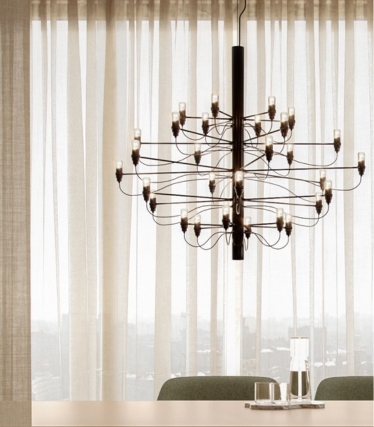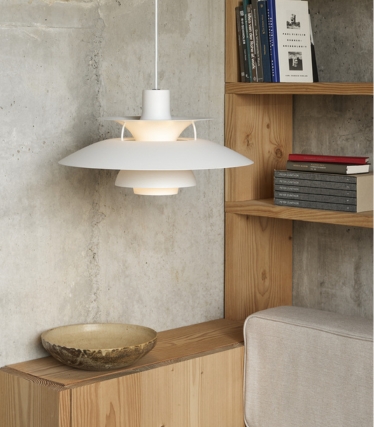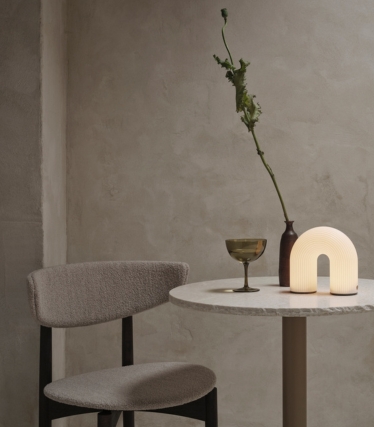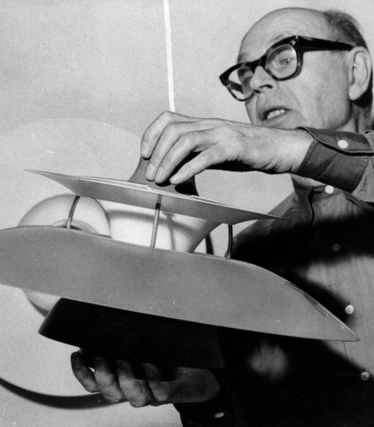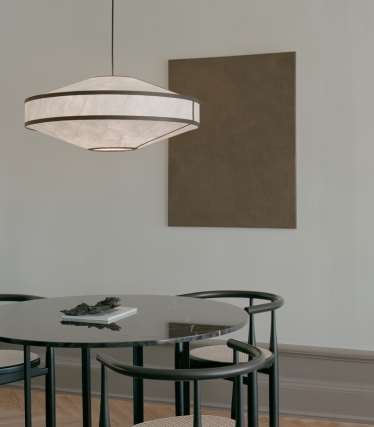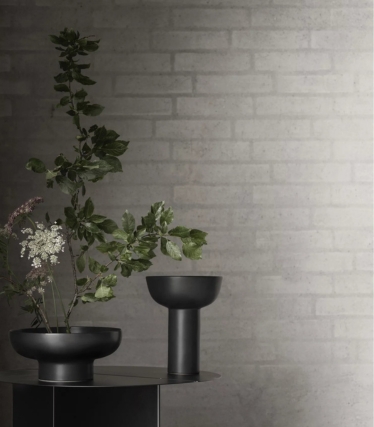HOW WE DECORATE WITH LIGHT IN OUR HOMES
At Lampemesteren, we experience on a daily basis how difficult it can be to find the lighting that suits your wishes and needs. You fall in love with a lamp and buy it, but your home doesn't look anything like you imagined. If you recognize this and nod in agreement to the despair of finding the right light for your home, here are a few rules of thumb to help you make the right decision!
:format(jpeg))
Decorate your rooms in 'layers of light'
In lighting design, we work with the concept of 'light layers', which in other words is the concept of designing with multiple light sources that provide different light to the room. Building a room in layers of light means working with ambient diffuse ambient light, zones of more direct functional light and supplementary spot light points.
The diffuse ground light is the light that envelops the entire room. It can come from windows, illuminated walls that reflect the light, or a lamp where the light source is shielded and the lamp emits light in all directions.
The zones of direct functional light are the larger surfaces and places in the room that are more illuminated than the rest of the room. For example, this can be a good idea to have above a kitchen counter, dining table or in a reading corner.
The spot light points occur when there are small light emitters placed in dark areas. This could be a small table lamp inside a shelving system, candles on a windowsill or a single pendant in a corner where the light source is visible.
We are positively stimulated when we use all three types of lighting in the same room. Below we've outlined some examples that show how to design with multiple layers of light.
:format(jpeg))
Make a quick light estimate before purchase
Making 100% correct light calculations is relatively complex and not something you can do without the right tools. However, you can easily make a quick approximate calculation of whether a lamp provides the desired amount of light.
The first thing you need to look for is the amount of light given by the lamp. You can find this under the technical specifications of the lamp. Here it is the 'lumen' value (lm for short) that describes the amount of light. If you only know the light source (bulb) to be used, you can find the lumen output of the light source under the technical specifications.
If you use LED light sources, you can roughly assume the following:
2-4W = 200-300 lumens 4-6W = 300-500 lumens 6-8W = 500-700 lumens 8-10W = 700-900 lumens 10-13W = 900-1200 lumens 13-20W = 1200-1600 lumens
LED bulbs use significantly less power than the old halogen and incandescent bulbs, but deliver the same brightness - and often with better color rendering and longer lifetime.
In addition to lumens, you need to know your lighting needs. Is it task lighting or cozy backlighting that you want in the intended area? There are specifications that can guide you in the direction of how much light, for example, 'task lighting' is. These specifications are given in the unit lux (lx for short). Lux is the unit for lumen/m2.
Work light = approx. 500 lx
General dimmed room lighting = approx. 200 lx
As a final detail, you need to know the size of the room or surface, depending on whether you want to calculate the light for a dining table, for example, or perhaps the living room as a whole.
Once you know the lamp's lumen output (lm), your light requirement (lx) and the size of the area to be illuminated (m2), you can use the formula below to calculate back and forth and find out which lamp or how many lamps you need for your specific needs:
lm = lx * m2
:format(jpeg))
To make things clear, we've calculated two hypothetical examples:
Stuen You have a 20 m2 living room and would like general room lighting of around 200 lx, so you can use the formula to calculate how many lumens you need. The calculation will look like the following:
200 lx * 20 m2 = 4000 lm
This means that you need 4000 lm to light your living room properly. These 4000 lm can easily be distributed over several lamps. Following advice number 1, it would be a good idea to distribute the 4000 lm to different types of light sources. For example, you could have a glass pendant that diffuses light to all sides at approximately 1500 lm, a table lamp in the shelf at approximately 300 lm and two floor lamps at approximately 1100 lm each.
Dining table You want to know how many lamps you need to light up your dining table properly. Your dining table is approximately 2 m2 and at the dining table you want good task lighting of approximately 500 lx. The calculation in this scenario would look like the following:
500 lx * 2 m2 = 1000 lm
This means that the lamp or lamps must provide a total light output of 1000 lm. Whether this is divided into three lamps of approximately 300 lm or one lamp of approximately 1000 lm by itself doesn't make much difference to whether your lighting needs are met.
)
Make walls reflect light and lift up the room
The third tip is actually very simple, but probably something few people think about. Basically, all surfaces reflect a proportion of the light that hits them. Light surfaces reflect more light than dark surfaces. White surfaces, whether matte or glossy, reflect more than 90% of the light cast on them. This provides a great opportunity to use larger, bright surfaces as light sources for the room.
Specifically, you can create a calm indirect light by illuminating the walls instead of thinking that you need to light up an area. For example, if you have a dark corner in your living room, it's a good idea to choose a floor lamp that provides light upwards (up-light). Here you will utilize both the light surface of the ceiling and the two enclosing walls. This would make the room bigger without blinding you. At the same time, you want to avoid creating a downward spotlight in the corner, which you would experience, for example, by having a down-light only.
A more modern solution that also works with indirect reflected light is to use surface-mounted spotlights that are tilted to focus the light directly onto the walls. This can be a good solution in a narrow hallway as it will open up the width of the hallway without dazzling or filling the space in any way.
